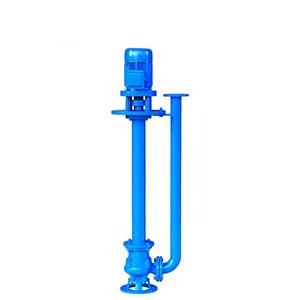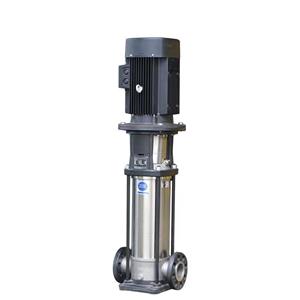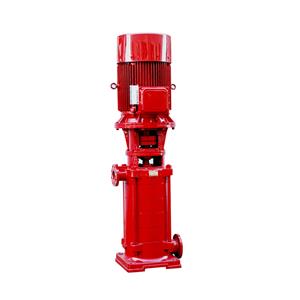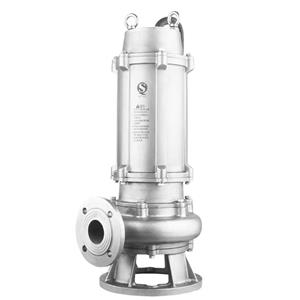Company news
-
Chemical centrifugal pumps are vital to the smooth operation of many industrial processes, but they require careful handling, monitoring, and maintenance to ensure optimal performance and prevent failures. By selecting the right materials, priming the pump properly, controlling operating conditions, preventing cavitation, performing regular maintenance, and following safety protocols, operators can maximize the efficiency, safety, and longevity of their centrifugal pumps. A proactive approach to pump care will not only extend the lifespan of the equipment but also enhance the safety and efficiency of the entire system, reducing the likelihood of hazardous incidents or costly downtime.
-
In conclusion, while magnetic drive pumps offer many advantages, such as leak prevention, low maintenance, and energy efficiency, they also have notable limitations. These pumps are not suitable for high-pressure or high-temperature applications, nor are they the best choice for handling highly viscous fluids or fluids that require specialized material compatibility. Their higher initial cost, potential complexity in repairs, and mechanical limitations should also be taken into account when selecting a pump for a specific application. Through my own experiences, I’ve learned that the key to successfully using magnetic drive pumps lies in understanding their strengths and weaknesses and carefully considering the operational requirements of the system. In many cases, the benefits of magnetic drive pumps far outweigh the limitations, but it is essential to make an informed decision based on the specific needs of the application. By doing so, companies can ensure that they are using the right technology to meet both performance and safety goals.
-
Magnetic drive pumps offer numerous advantages, from eliminating the risk of leakage to reducing maintenance costs and improving energy efficiency. Their ability to safely handle hazardous and corrosive fluids makes them an essential technology in many industries, particularly those that prioritize safety, environmental protection, and product purity. Based on my personal experience, I believe that magnetic drive pumps provide a superior solution for fluid handling, offering long-term reliability, performance, and peace of mind. As industries continue to prioritize safety and efficiency, the use of magnetic drive pumps will undoubtedly become more widespread, helping to meet the evolving demands of modern operations.
-
0701-2025
Differences Between Stainless Steel Magnetic Drive Pumps and Fluoroplastic Magnetic Drive Pumps
In conclusion, the choice between stainless steel magnetic drive pumps and fluoroplastic magnetic drive pumps depends largely on the specific requirements of the application. Stainless steel pumps are ideal for general-purpose applications where strength and durability are important but chemical resistance is not a major concern. On the other hand, fluoroplastic pumps are perfect for handling highly corrosive chemicals and fluids, though they come with a higher initial cost and lower mechanical durability. By understanding the strengths and limitations of each material, engineers can select the most suitable magnetic drive pump for their needs, ensuring both efficiency and safety in fluid transfer operations.
-
Troubleshooting single-stage centrifugal pumps involves identifying the root cause of the issue and implementing targeted solutions. Regular maintenance, proper pump operation, and timely repairs can prevent many common failures and extend the pump’s service life. By understanding the causes and remedies for typical problems such as insufficient flow, cavitation, overheating, and leakage, operators can ensure reliable and efficient pump performance in their applications.
-
0601-2025
Measures to Mitigate Cavitation in Pumps
Cavitation can severely impact pump performance and longevity, but with proper design, operation, and maintenance, its effects can be minimized or eliminated. By focusing on measures such as increasing NPSH, optimizing operating conditions, controlling fluid temperature, and improving system design, pump operators can ensure reliable and efficient operation. Investing in preventive measures not only enhances performance but also reduces maintenance costs and downtime, making it a worthwhile endeavor for any pump system.
-
Centrifugal pumps are versatile and highly customizable devices, available in various designs to meet a wide range of operational needs. By understanding their common structures and classification methods, engineers and operators can make informed decisions to ensure reliable and efficient pump performance in their applications.
-
Circulation pumps and booster pumps serve distinct roles in fluid handling systems. Circulation pumps excel in maintaining consistent fluid movement within closed loops, while booster pumps address pressure deficiencies in various systems. By understanding their differences in functionality, design, and applications, you can make an informed decision to meet your system’s specific needs.
-
In summary, a circulation pump can typically run continuously for anywhere from 12 hours to several years, depending on factors such as its design, maintenance, materials, and the conditions under which it operates. Industrial pumps are generally built to operate around the clock, while residential pumps may be designed for intermittent use. The key to ensuring continuous operation for long periods is regular maintenance, ensuring the system is designed with the proper cooling and pressure management features, and using a pump that is adequately rated for the intended application. Understanding these factors helps not only in choosing the right pump for your system but also in maximizing the longevity and reliability of the pump’s operation over time. Regular checks and proper system design can allow for years of uninterrupted service, whether in an industrial plant, a residential heating system, or any other application requiring continuous fluid circulation.
-
Both energy-efficient pumps and variable frequency pumps offer unique advantages and cater to different operational needs. Energy-efficient pumps excel in steady-state applications, providing high efficiency with minimal complexity. In contrast, variable frequency pumps shine in dynamic systems, offering unparalleled flexibility and energy optimization. By understanding the distinctions between these two technologies, users can select the most suitable pump to maximize efficiency, reduce costs, and achieve their operational goals.




